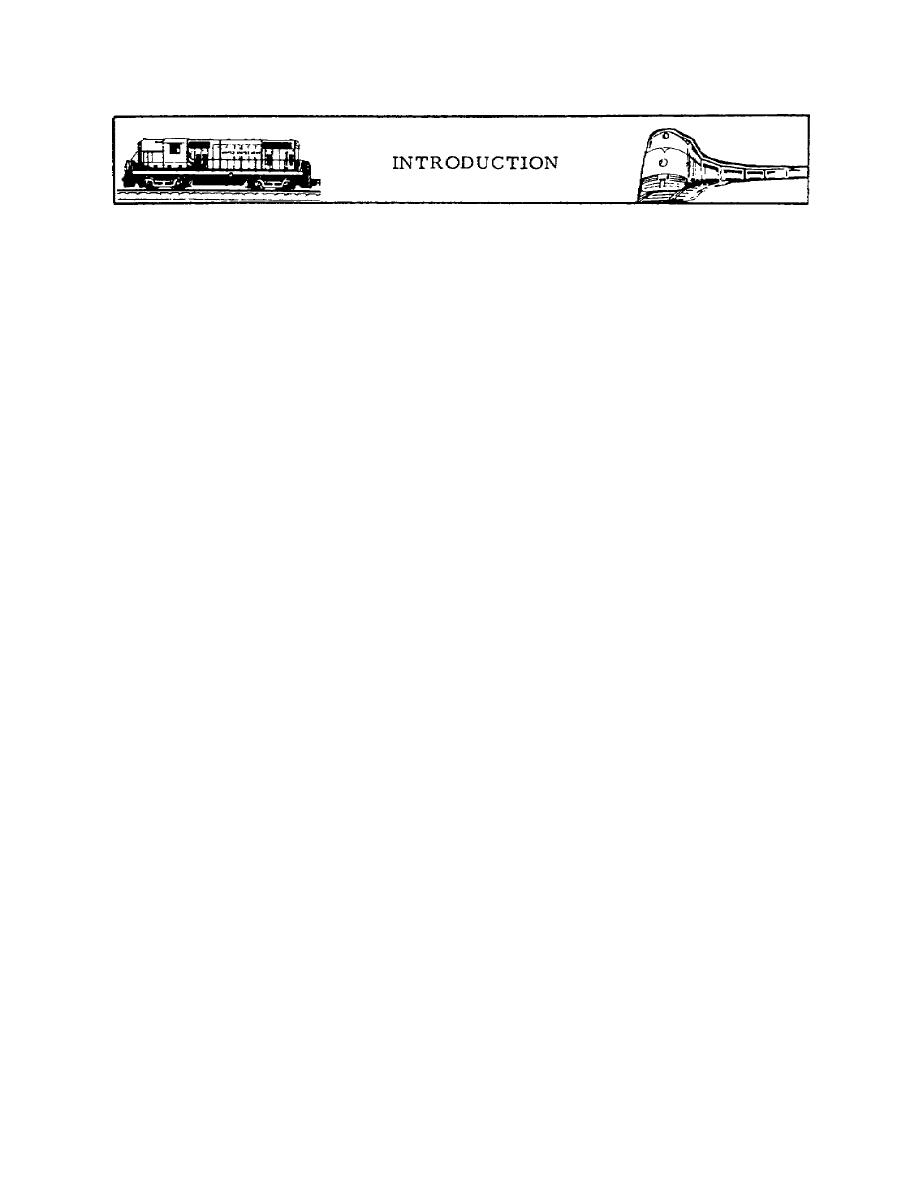
In the 1860's, Alphonse Beau du Rochas suggested several changes in the internal combustion
engine to improve its thermal efficiency. One change was to ignite fuel by the heat of compression
rather than by a spark. In 1892, Dr. Rudolph Diesel adopted the idea and patented an engine that burned
powdered coal ignited by compression. The coal-burning engine didn't develop as Dr. Diesel had hoped;
but in 1897 he built another compression-ignition engine--one that burned oil. Although various
methods were used to transmit the engine's power to driving wheels, electric drive proved most efficient.
Combination of the diesel engine with electric drive is known as the diesel-electric assembly. Applied to
a locomotive, the diesel-electric assembly may vary from model to model; but general construction
principles are the same in all models.
The first application of the diesel engine to railroad stock is believed to have occurred in Sweden
just before World War I. Then, in 1924, the Ingersoll-Rand, General Electric, and American
Locomotive Companies built a diesel-electric switching locomotive for the Central Railroad Company
of New Jersey. Use of the diesel-electric locomotive spread rapidly as it proved its economy and ease of
operation and maintenance. The first completely dieselized railroad was the Birmingham Southern, in
1937. By 1955, diesel-electric locomotives were operating 88 percent of the passenger train miles, 85
percent of the total freight ton miles, and 91 percent of the total switching hours of United States
railroads. In 1968, of all the locomotives in this country, 98.5 percent were diesel-electrics.
Military railroad operations are different from civilian operations. In the United States, military
locomotives are used only for training and for hauling supplies from a commercial line into an
installation. In a theater of operations, however, when the transportation railway service operates a rail
system, it uses Army-owned locomotives and those of the local railroads when possible.
This text discusses diesel-electric locomotives. It is divided into two chapters. The first is
devoted to construction and the second to maintenance and repair and troubleshooting. Technical terms
used are explained in the glossary, appendix II, in the back of
1



 Previous Page
Previous Page
